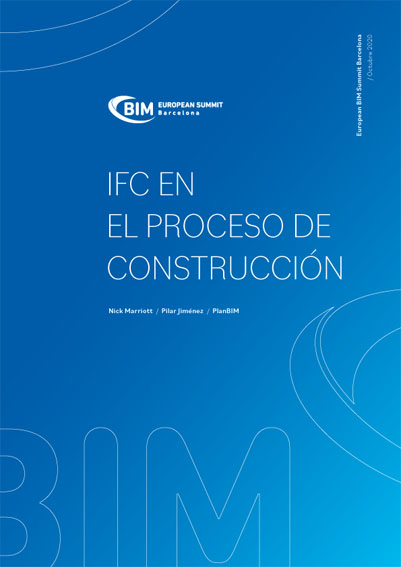Next Thursday November 19, the European BIM Summit online, also known as the EBS+, will discuss and approve the three collaborative working documents that are called upon to be reference tools in the AECO sector. The first document that will be presented is IFC in the building process in the round table that will kick off at 10 a.m.
The first big moment of the biggest international online Congress about BIM will feature the participation of the experts involved in drafting the document: Nick Marriott, Pilar Jiménez and Sebastián Manríquez.
Nick Marriott is a Chartered Architectural Technologist (CIAT) and a chartered building engineer with more than thirty years of experience in building, as well as a specialist in BIM development.
Pilar Jiménez is BIM Manager at Ineco, in charge of the implementation of BIM in the corporate setting, leading innovation projects such as the auditing of BIM models and the evaluation of modelling software IFC capabilities.
Sebastián Manríquez is assistant director of PlanBIM Chile, an organisation tasked with implementing BIM technology in public institutions.
The round table will also feature the participation of Rob Roef, known as Captain BIM of Rotterdam, a business developer at the Netherlands Organisation for Applied Scientific Research (TNO), where he manages the development of open-source BIM developments.
This first round table will be moderated by Rafael Capdevila, director of the BIM Manager Postgrad of the Col·legi d’Aparelladors, Arquitectes Tècnics i Enginyers d’Edificació de Barcelona [Association of Surveyors, Technical Architects and Building Engineers of Barcelona] (CAATEEB).
IFC, a data format for flexible information exchange
The Industry Foundation Classes (IFC) permits the exchange of information among all the professionals engaged in a building project, from the preliminary project phase all the way through to maintenance. It is an open and neutral format, in keeping with the principle of cooperation that underpins the BIM methodology.
However, although IFC is very common in the planning phase, it is more difficult to apply in the building phase. The transition between each phase involves a loss of information and therefore, between the design and the actual materialisation of the project, overcosts tend to be run up by the end of the cycle during the management, maintenance and operating phases.
The obvious conclusion is that all these phases must be aligned from the outset. The IFC in the building process document must be a tool that will make it possible to optimise information exchange between and across all processes.
Discover the content of IFC in the building process
The document that we will be debating next November 19 details the aspects that must be taken into account in order to bring about a more effective integration of IFC in all building processes. It is structured in the following sections:
- Problems with IFC, what they are.
- Why it is necessary to work for IFC4Worksite.
- How to obtain a good IFC in the design phase in order to have a good IFC for the building phase (with step-by-step monitoring of the entire process, from the names given to files through to the attainment of a collision-free model, including correct geopositioning, the naming of 3D elements, standard classification or parameters).
- Entities for infrastructure projects.
- Entities for the building phase.
- Hiring IFC for the building process: requirements and recommendations.
- EIR requirements before applying for IFC for building.
- After the building phase: what are the requirements for delivering a good IFC model to the FM stakeholders?
- List of benefits: information searching and filtering by classifications, automatic linking of the model’s elements to work activities, linking of non-graphical information and/or documents to the BIM elements according to classifications, facilitate the management of value gained with the BIM model, be a nexus of connection between the model’s information and the maintenance management systems.
- Who is responsible for updating the model during the building phase.
- Creating the team to work with IFC during the building phase.
See you on Thursday, November 19. You are still in time to register!
The European BIM Summit is possible thanks to the contribution of our sponsors: Roca, as Main sponsor; Finalcad, as Gold sponsor; Agència Catalana de l’Aigua, ATL, Infraestructures.cat, Bentley, CIAT, FGC, MUSAAT, PREMAAT, Graphisoft Archicad, SIMBIM Solutions, Ineco, ASP Corredoria d’Assegurances and Suez as Silver sponsors; Calaf Constructora, Copisa, and Fundación Laboral de la Construcción, as Pro sponsors; and Master Builders Solutions, as Sustainability sponsor. It has also the support and the collaboration of the Departament de Territori i Sostenibilitat of the Generalitat de Catalunya.






